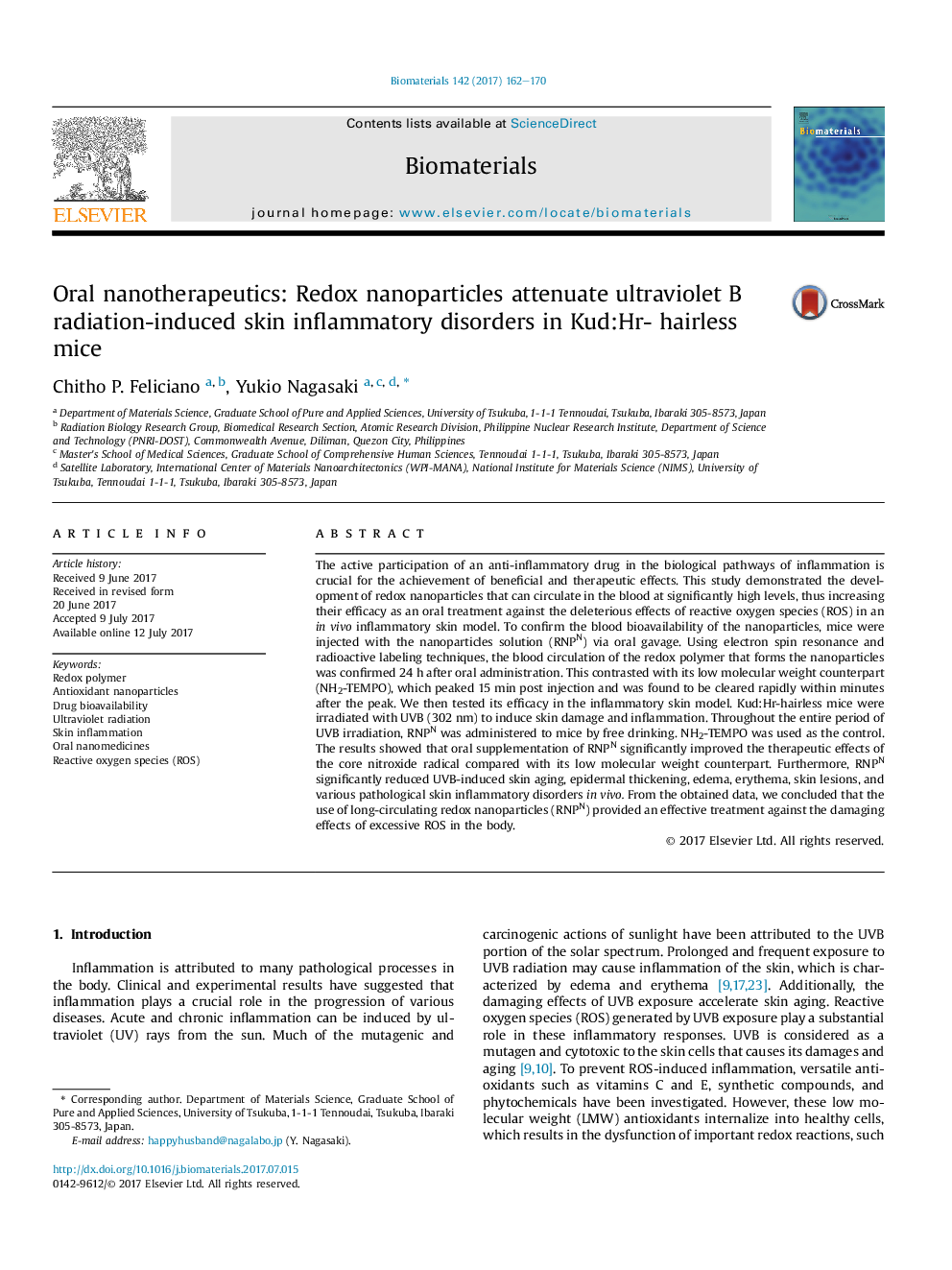| Article ID | Journal | Published Year | Pages | File Type |
|---|---|---|---|---|
| 4752277 | Biomaterials | 2017 | 9 Pages |
The active participation of an anti-inflammatory drug in the biological pathways of inflammation is crucial for the achievement of beneficial and therapeutic effects. This study demonstrated the development of redox nanoparticles that can circulate in the blood at significantly high levels, thus increasing their efficacy as an oral treatment against the deleterious effects of reactive oxygen species (ROS) in an in vivo inflammatory skin model. To confirm the blood bioavailability of the nanoparticles, mice were injected with the nanoparticles solution (RNPN) via oral gavage. Using electron spin resonance and radioactive labeling techniques, the blood circulation of the redox polymer that forms the nanoparticles was confirmed 24 h after oral administration. This contrasted with its low molecular weight counterpart (NH2-TEMPO), which peaked 15 min post injection and was found to be cleared rapidly within minutes after the peak. We then tested its efficacy in the inflammatory skin model. Kud:Hr-hairless mice were irradiated with UVB (302 nm) to induce skin damage and inflammation. Throughout the entire period of UVB irradiation, RNPN was administered to mice by free drinking. NH2-TEMPO was used as the control. The results showed that oral supplementation of RNPN significantly improved the therapeutic effects of the core nitroxide radical compared with its low molecular weight counterpart. Furthermore, RNPN significantly reduced UVB-induced skin aging, epidermal thickening, edema, erythema, skin lesions, and various pathological skin inflammatory disorders in vivo. From the obtained data, we concluded that the use of long-circulating redox nanoparticles (RNPN) provided an effective treatment against the damaging effects of excessive ROS in the body.
